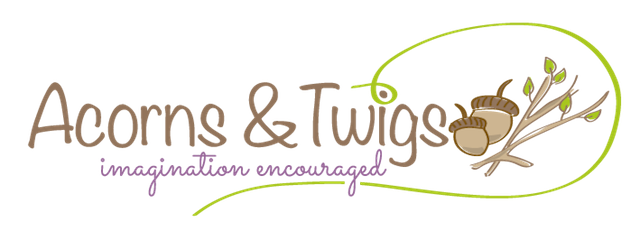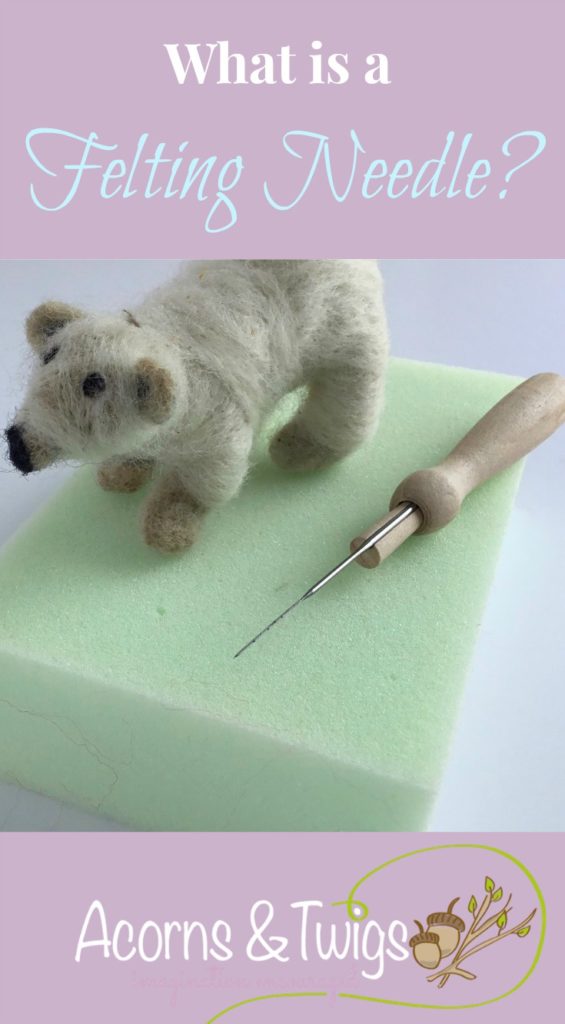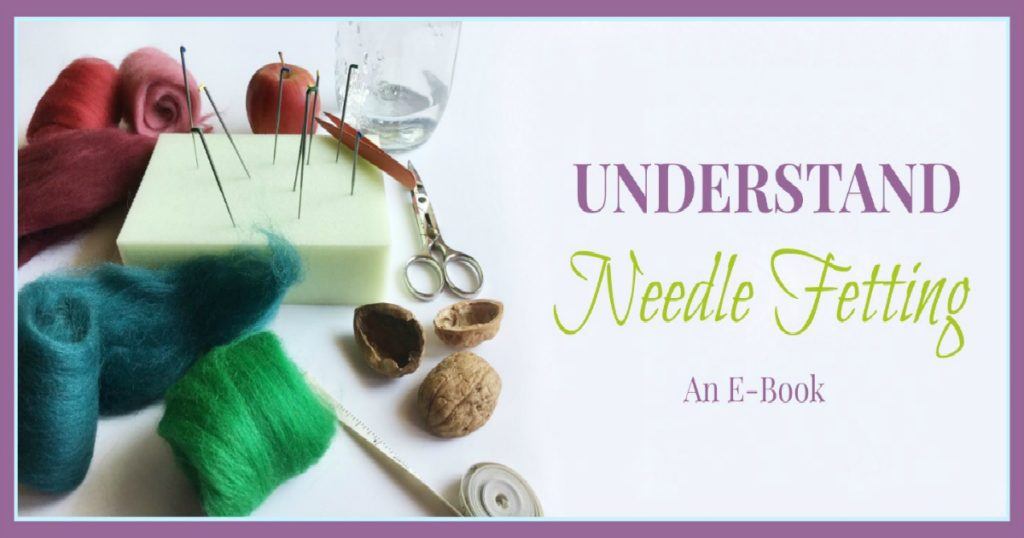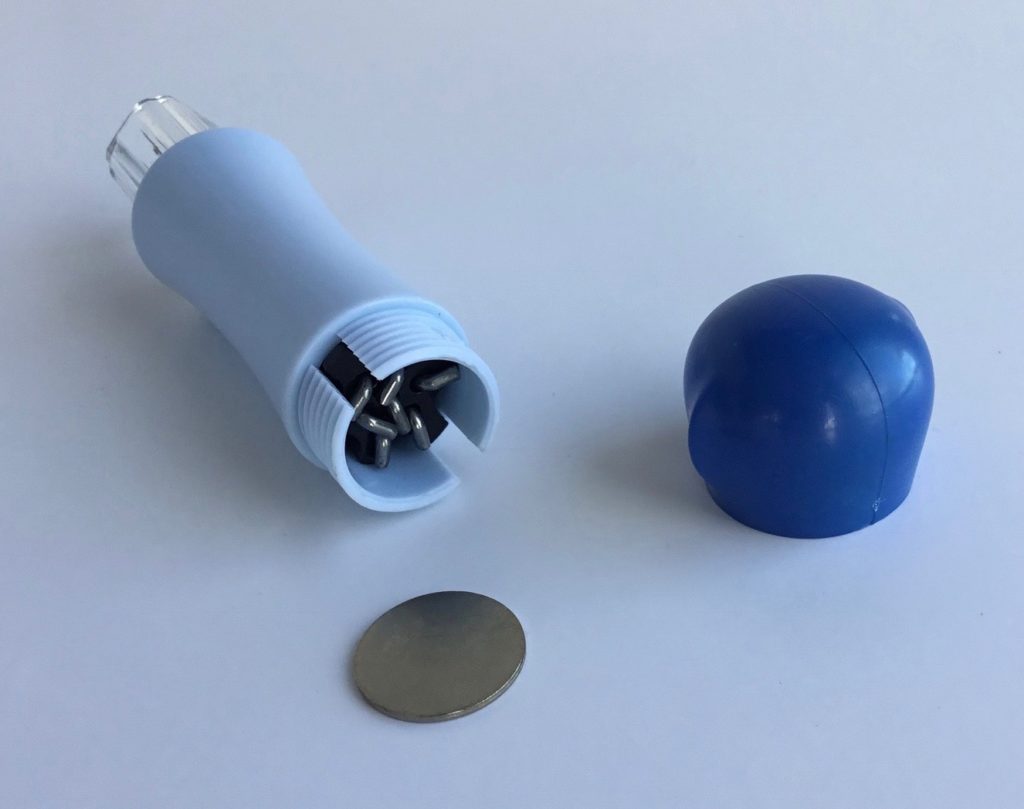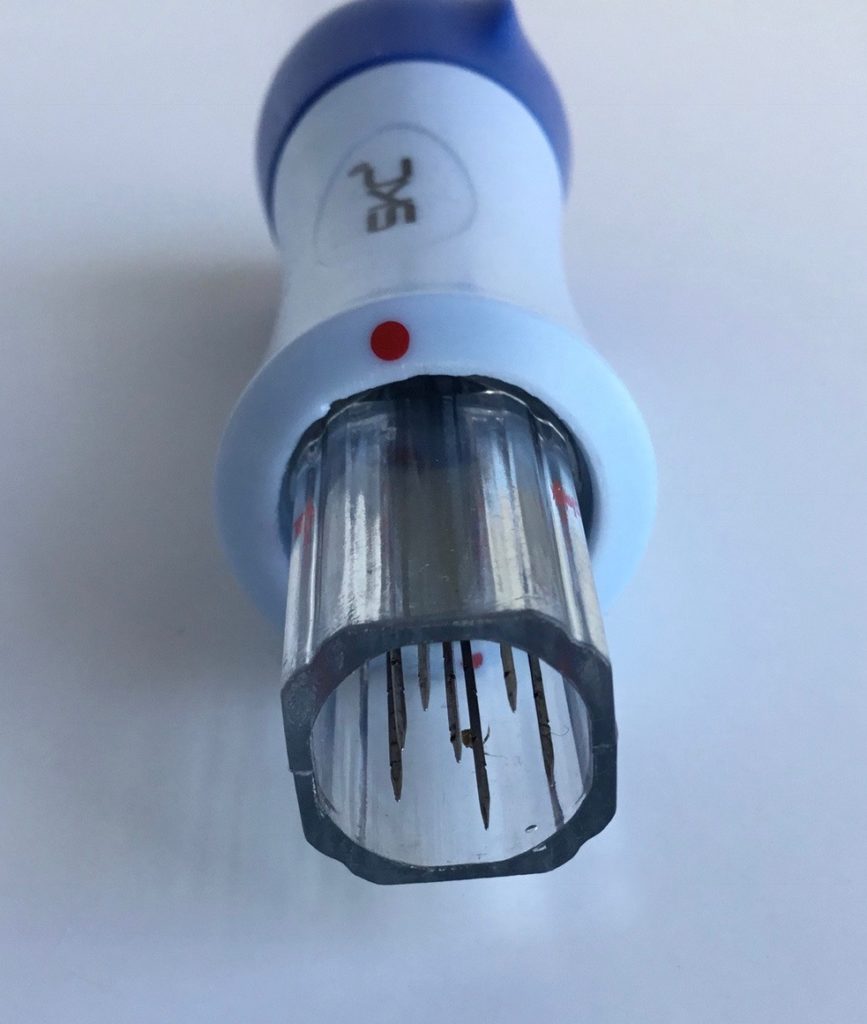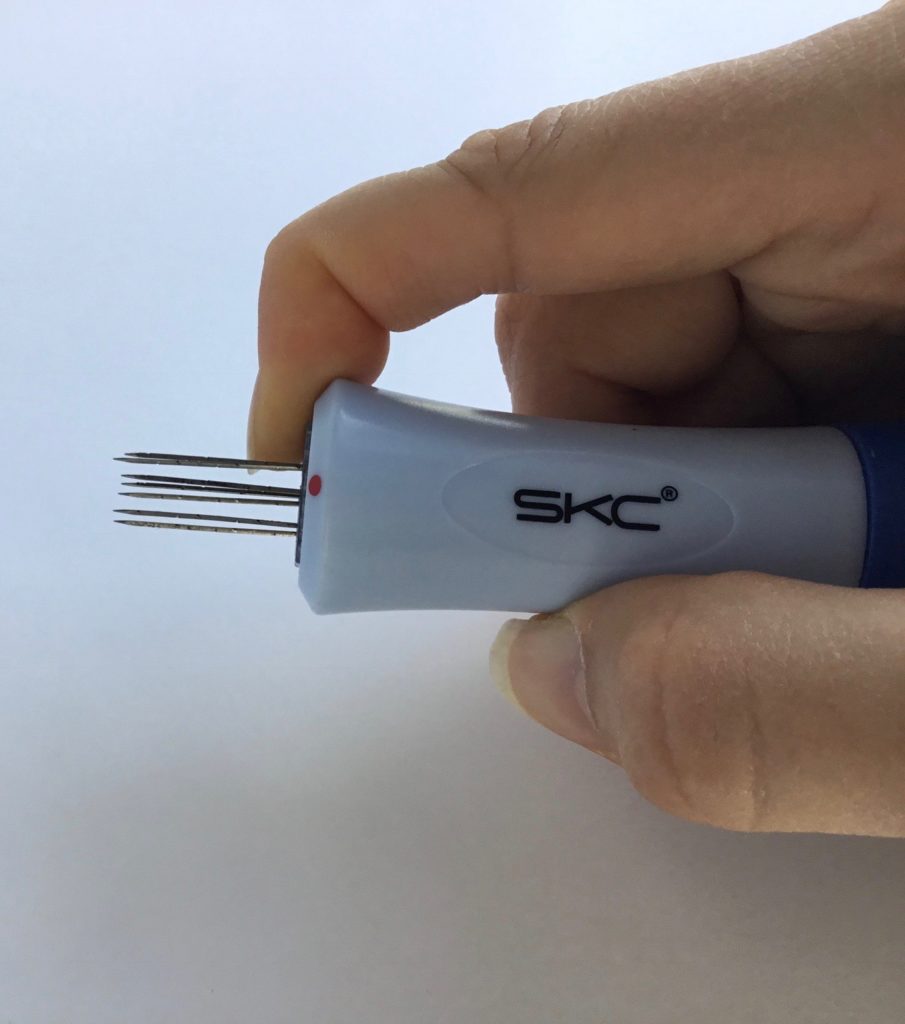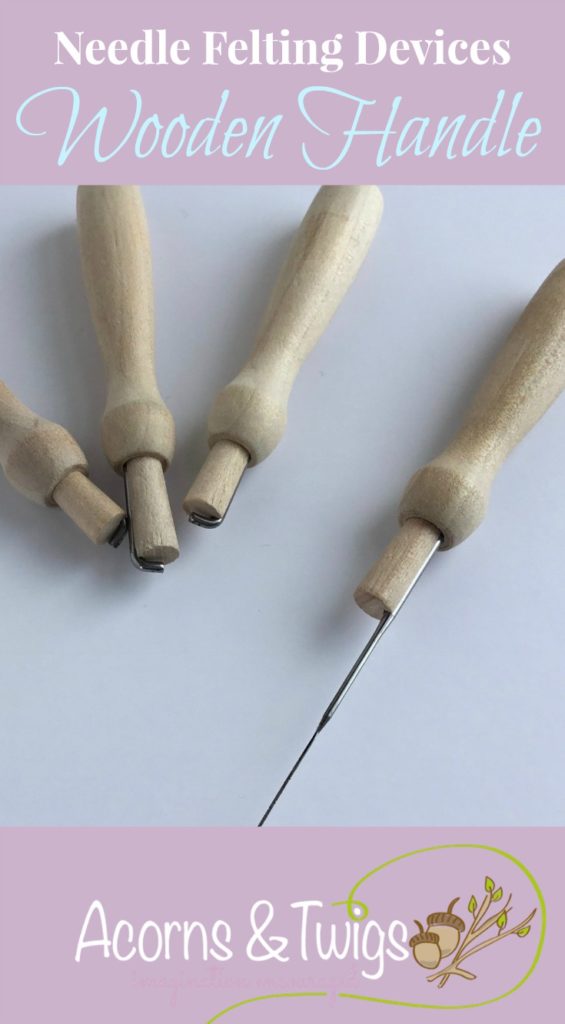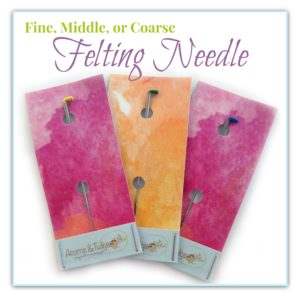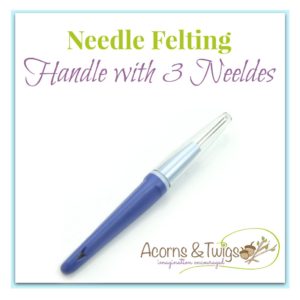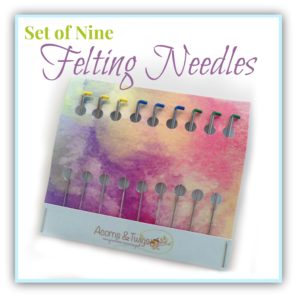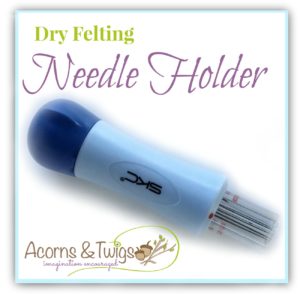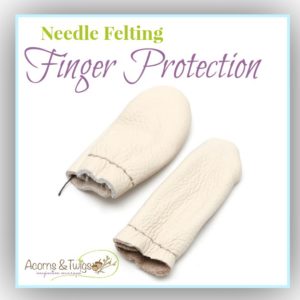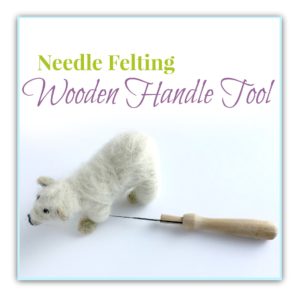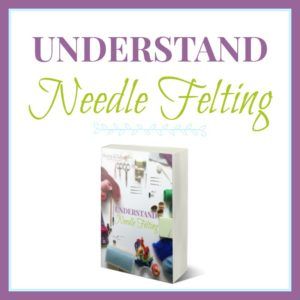Felting needles are used to needle felt and when combined with a handle, they are referred to as a felting device. The felting needle or the felting device is your most important tool when needle felting. As a beginner, you will find the most important things to know about felting needles and felting devices here on this page. I have included a list of hyperlinks to any of the products we sell, that I have mentioned, at the end of this article.
Felting Needles
Ok, so first of all, you need to have at least one felting needle in order to NEEDLE FELT – kinda obvious, right? I do recommend having more than one, because they can easily snap, bend and break – especially if you are a beginner or working with children.
Although they are made of metal, the bottom third of the needle is super-duper thin and fragile. Their name already hints their shape – just like a sewing needle, or a doctor’s needle, they are thin, pointy and very very sharp. They can and will pierce through any skin that get’s in their way, so try to avoid it.
What makes them even more painful than a sewing needle is the fact that they have tiny barbs spread out on the tip, just like a fishing hook, so what ever they pierce into, doesn’t come back out. That is their purpose – you use a felting needle to punch at your wool fibers. The barbs grab some loose fiber and pulls it into the core of the wool form you are felting and it causes the fibers to get tangled and matted. As you continue to stab the needle in and out of of your wool the fibers get more and more tangled and denser and firmer.
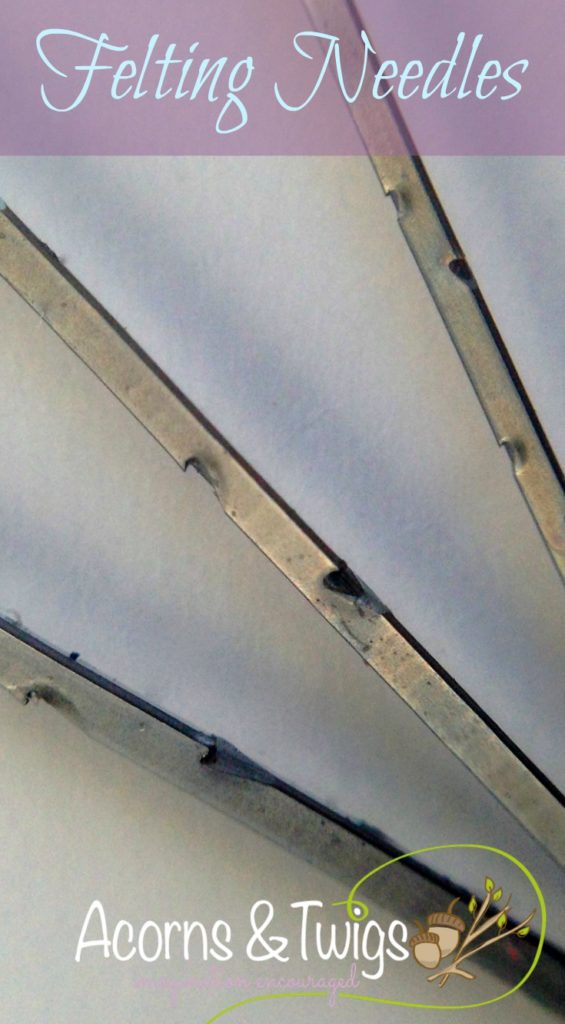
The most common felting needles have triangular shaped tips, meaning it has three sides. There are also star (4 sided), spiral/twisted, reverse and crowned types of felting needles. But for a beginner, I recommend sticking with a triangle felting needle.
Felting Needle Sizes
You might also notice some needle felting suppliers mention the gauge of their needles. This simply tells you the needle’s thickness. A small number (for example 32) means it is very thin, and a larger number (40) means it is quite thick and coarse.
Typically projects are started with a higher gauge and later a middle and thinner needle. The type of wool you are working with also makes a difference to the needle you will want to use.
Most suppliers keep it simple and just label their needles fine, middle and coarse. If you are just starting out, grab yourself a middle sized needle – it is the best of both worlds.
I have also noticed that felting needles sometimes are different lengths. I am not quite sure if that has a purpose or not. Maybe, it is just a difference in manufactures?? If you happen to know the reason behind different lengths, please let me know in the comments below! Thank!
Felting Devices
Felting needles were originally only meant for industrial felting machines and therefore do not exactly sit comfortably between your fingers. Their “L” shaped handle was never meant for our hands. Therefore, many creative people have come up with handy tools to help us go on felting for hours and hours upon end – with out the pain. If you are just starting out, you definitely can do with out a handle – I actually prefer working with out, and I do A LOT of felting.
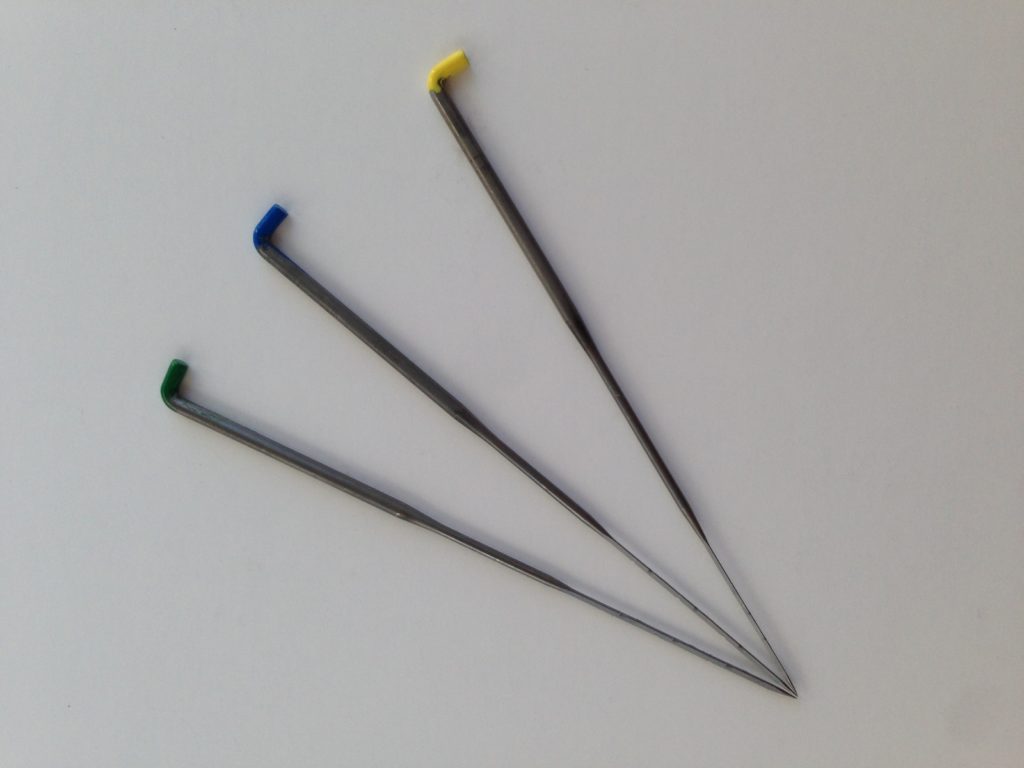 Another reason to consider working with a felting needle holder is because some are made to hold several needles at the same time. That means you can have 2-7 (or more) needles punching in to the wool at the same time, getting the work done 2-7x faster.
Another reason to consider working with a felting needle holder is because some are made to hold several needles at the same time. That means you can have 2-7 (or more) needles punching in to the wool at the same time, getting the work done 2-7x faster.
You can find several different varieties of handles for felting needles, some made of plastic and some of wood. Depending on the device and the number of needles you can place into it, you can either work on small details or on larger surfaces.
Pen Shaped Felting Devices
Most felting devices in the shape of a pen are made of plastic and can be equipped with one, two or three felting needles.
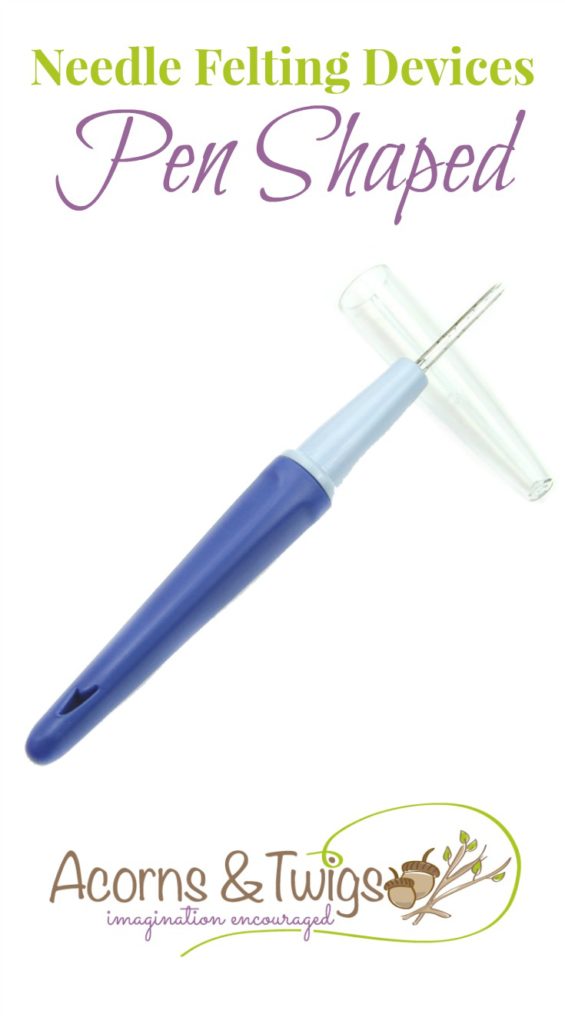 Just like a pen, you can twist the device open in the middle. Instead of a tube of ink, you stick the felting needles in a top and bottom hole. Here you have to be careful not lead the needle through the wrong bottom hole, causing the needle to be crooked, bended and snap.
Just like a pen, you can twist the device open in the middle. Instead of a tube of ink, you stick the felting needles in a top and bottom hole. Here you have to be careful not lead the needle through the wrong bottom hole, causing the needle to be crooked, bended and snap.
Felting devices in the form of a pen are perfect for small projects and fine details since the needles are are very close to each other. Another advantage of this sort of device is that the needles are centered in the device’s middle, so you can work much more detailed and targeted.
If you are working on really small details, then I suggest using the pen device with only one needle. If you load it with two felting needles, you can create exact lines and edges. Larger areas are best felted with three needles.
If you want to know even more about needle felting then I suggest you take a look at our e-book “Understand Needle Felting“.
Other Plastic Felting Devices
There are other felting devices made of plastic available. One of my favorites for beginners and children is a seven felting needle holder with a protective cover that prevents almost any injuries. The plastic “fence” around the needles disappears into the holder when punched onto your wool, allowing only the needles to penetrate. You can also turn the protective cover into the locked position to protect your fingers and needles when the device is not in use.
Wooden Felting Devices
Other than the single needle wooden handle, these felting devices are usually made for three, six, eight or ten felting needles. Some have a screw under the wooden handle and a metal plate with holes. You can unscrew the handle in order to place the needles into the metal plate. There are small indents for the “L” handle so they don’t turn and are held tightly when the handle is screwed back on.
Felting devices with wooden handles are especially good for large and flat creations.
As with the pen felting device, you can freely choose the amount of needles you put into the device. Even if you have a device that is meant for eight needles, you can simply fill it with two or three, depending not the your current process. Although, since the needles are inserted in a circle form, and not at all in your devices middle, it is harder to target the needle to punch in the right spot and your chances of breaking a needle are higher.
Which Felting Device for a Beginner?
If you are just starting off with needle felting and want to use a felting device, then I suggest the pen form. As a beginner, you should start with smaller projects, in order to get a feeling for this new craft. Also, the pen is more versatile than the wooden handle and the pen form will feel more natural and comfortable to you.
Safety First
Since felting needles are very sharp, pointy and break easily, please always be very careful and aware of the where about of your fingers at all times! There is a large risk of injury if you do not use felting needles correctly.
Although I do a lot of felting with children, and offer a few felting tutorials for children. I want you to understand that felting needles should not be in the hands of very young children. If you have young children, please makes sure to keep your felting needles in a closed box out of the reach of the children. Just use your common sense! 😉
While felting, you hold your needle in one hand and the wool in the other. It is quite common that a felting needle slips and pricks a finger or hand. This is painful. You might end up laying on the floor making weird noises. Have a band-aid at reach.
Tip: if you are felting with children or you are a bit clumsy yourself, I recommend wearing leather (finger) gloves.
Since felting needles are quite thin and plenty of force is applied to them, they do tend to bend after a while or they can unexpectedly snap and break. Make sure you find and throw away all the pieces of the needle before you continue. They can fly across the entire room, according to my experiences. Their barbs can cause some serious injuries if someone accidentally steps on to a forgotten/lost broken piece. If you can’t find it on the floor or table, check your clothes sometimes they stick to you. Worst case scenario, it could have broke inside your work and you have to either, courageously and carefully squeeze your project until you’ve found it and pulled it out, or heaven forbid toss it and start all over. Never give a child a toy that might have a broken needle into it.
Your Shopping List
To help you get started right away, now that you know what a felting needle and device is, I’m including this list of links to the items we sell in our shop:
